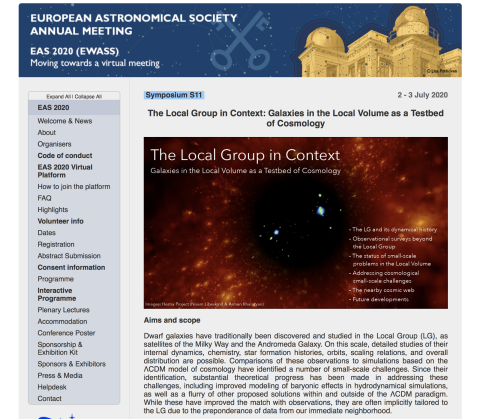 The annual meeting of the European Astronomical Society is happening this week. This year, I am not only a participant and speaker (two talks, one on Tuesday in S10, the other on Wednesday in S7). No, I am also chair of the SOC organizing one of the two-day symposia: S11 – The Local Group in Context: Galaxies in the Local Volume as a Testbed of Cosmology. It will take place on Thursday, July 2 and Friday, July 3, and consists of a total of six 1.5h sessions, a total of 30 talks and 10 ePosters.
The annual meeting of the European Astronomical Society is happening this week. This year, I am not only a participant and speaker (two talks, one on Tuesday in S10, the other on Wednesday in S7). No, I am also chair of the SOC organizing one of the two-day symposia: S11 – The Local Group in Context: Galaxies in the Local Volume as a Testbed of Cosmology. It will take place on Thursday, July 2 and Friday, July 3, and consists of a total of six 1.5h sessions, a total of 30 talks and 10 ePosters.
When I had applied for this opportunity with the concept for this Symposium, last year and way before anyone had heard of the Corona virus, the conference was expected to take place in Leiden, The Netherlands. Things came differently, the conference switched to a massive virtual meeting (approaching 1500 participants in total), and also my symposium had to switch to a different format. Despite such challenges, I think we have a highly interesting symposium coming up, and I’m excited about the many excellent speakers who will contribute to our meeting.
Below, you find some more information on our symposium:

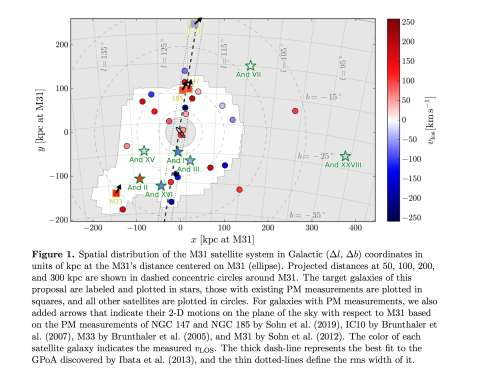 Great news from the Hubble Space Telescope: Our observing proposal “Andromeda and the Seven Dwarfs: M31 Mass, Satellite Orbits, and the Nature of the Satellite Plane”, was awarded observing time. The proposal is lead by Tony Sohn and is part of the HSTPROMO collaboration. For a whopping 48 orbits, the Space Telescope will observe our targets (green stars in my figure on the right). These measurements will reveal the proper motions (i.e. motions on the sky) of seven M31 satellite galaxies. This will be the first time that we will be able to study the full 3D motions (and thus 6D phase-space coordinates) of a sample of satellite galaxies outside of our Milky Way. And it will be a first step in determining how dynamically stable (or rotationally supported) the plane of satellite galaxies around Andromeda is.
Great news from the Hubble Space Telescope: Our observing proposal “Andromeda and the Seven Dwarfs: M31 Mass, Satellite Orbits, and the Nature of the Satellite Plane”, was awarded observing time. The proposal is lead by Tony Sohn and is part of the HSTPROMO collaboration. For a whopping 48 orbits, the Space Telescope will observe our targets (green stars in my figure on the right). These measurements will reveal the proper motions (i.e. motions on the sky) of seven M31 satellite galaxies. This will be the first time that we will be able to study the full 3D motions (and thus 6D phase-space coordinates) of a sample of satellite galaxies outside of our Milky Way. And it will be a first step in determining how dynamically stable (or rotationally supported) the plane of satellite galaxies around Andromeda is.
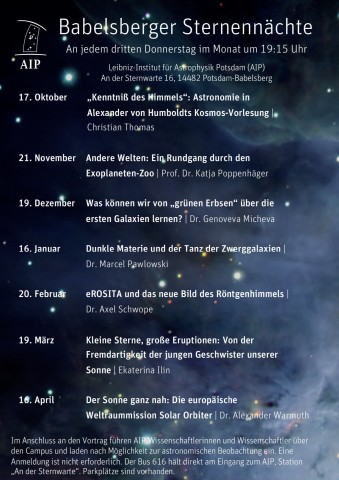
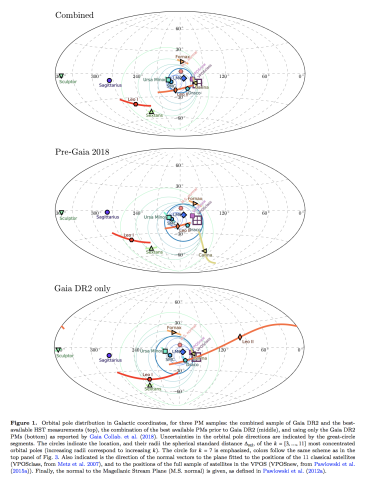
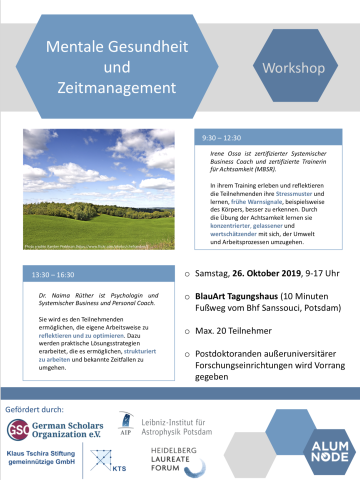 Together with a fellow alumna of the German Scholar Association Leadership Academy, I am organizing a workshop on mental health and time management, lead by two coaches who are experts on these topics. The one-day workshop is primarily aimed at junior researchers in Berlin and Brandenburg (PhD students, postdocs, junior group leaders). We successfully obtained full funding, so we can offer the workshop air no cost to the participants (and it includes coffee, snacks, and a lunch).
Together with a fellow alumna of the German Scholar Association Leadership Academy, I am organizing a workshop on mental health and time management, lead by two coaches who are experts on these topics. The one-day workshop is primarily aimed at junior researchers in Berlin and Brandenburg (PhD students, postdocs, junior group leaders). We successfully obtained full funding, so we can offer the workshop air no cost to the participants (and it includes coffee, snacks, and a lunch).